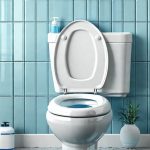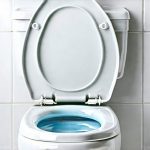Restroom anxiety, often unspoken but surprisingly common, is a complex phenomenon that goes beyond simple shyness or introversion. It’s a pervasive worry about using public restrooms—or even private ones outside the comfort of one’s home—rooted in fears ranging from germs and contamination to social judgment and lack of control. This anxiety can significantly impact daily life, leading individuals to restrict fluid intake, avoid social situations, and experience considerable stress just thinking about needing to use the facilities. It’s crucial to understand that experiencing this isn’t a sign of weakness or abnormality; it’s a natural response to perceived threats and anxieties that many people grapple with in varying degrees.
The root causes are often multifaceted, stemming from childhood experiences, generalized anxiety disorders, obsessive-compulsive tendencies, social phobias, or even traumatic events. Often, the anxiety isn’t about the restroom itself but what it represents: vulnerability, exposure, and a loss of personal space. It can be exacerbated by media portrayals of unclean restrooms or negative past experiences that have created conditioned responses. Recognizing this is not a character flaw, but a learned behavioral pattern, is the first step toward managing it effectively. The good news is that there are techniques—and breathing exercises chief among them—that can help regain control and mitigate the distressing effects of restroom anxiety.
Understanding the Anxiety-Breathing Connection
The physiological response to anxiety is deeply intertwined with our breathing patterns. When we experience fear or stress, our sympathetic nervous system kicks into “fight or flight” mode. This triggers a cascade of physical changes: increased heart rate, rapid shallow breathing, muscle tension, and heightened alertness. While intended to prepare us for immediate danger, this state can be debilitating when triggered by something like the thought of using a restroom. Shallow, rapid breaths actually reinforce feelings of anxiety, creating a vicious cycle where physiological symptoms amplify psychological distress. Conversely, consciously altering our breathing patterns can directly influence our nervous system, shifting it from sympathetic dominance to parasympathetic activation—the “rest and digest” state associated with calm and relaxation.
Breathing exercises aren’t about eliminating anxiety altogether; they are tools for managing the physical sensations that accompany it. By slowing down the breath and focusing on diaphragmatic breathing (breathing deeply from the abdomen), we send signals to our brain that we are safe, thereby reducing the physiological symptoms of anxiety. This doesn’t instantly erase the fear, but it creates space between the trigger – the thought of a restroom – and your reaction, allowing for a more rational response. It’s about regaining agency over your body’s natural stress response.
The effectiveness lies in neuroplasticity—the brain’s ability to reorganize itself by forming new neural connections throughout life. Repeated practice of breathing exercises strengthens the pathways associated with calm and relaxation, making them more readily accessible when anxiety arises. This isn’t a quick fix, but a skill that improves with consistent application. It is important to note that for some individuals, underlying mental health conditions might require professional intervention alongside these techniques.
Diaphragmatic Breathing: The Foundation of Calm
Diaphragmatic breathing, sometimes called belly breathing, is the cornerstone of many anxiety-reducing techniques because it directly engages the parasympathetic nervous system. Most people breathe shallowly from their chest, which contributes to tension and hyperventilation during anxious moments. Diaphragmatic breathing utilizes the diaphragm—a large muscle at the base of the lungs—to draw air deep into the abdomen, resulting in a fuller, more efficient breath.
Here’s how to practice:
1. Find a comfortable position – sitting or lying down.
2. Place one hand on your chest and the other on your abdomen.
3. Slowly inhale through your nose, allowing your abdomen to rise while keeping your chest relatively still. You should feel your hand on your abdomen move more than the hand on your chest.
4. Exhale slowly through your mouth, letting your abdomen fall.
5. Repeat this process for several minutes, focusing on the sensation of your breath.
Initially, it may feel awkward or uncomfortable if you’re not accustomed to breathing in this way. Persistence is key. Regular practice will gradually make it more natural and accessible, even when experiencing anxiety. Consistency is crucial – even five to ten minutes a day can yield significant benefits over time.
Box Breathing: A Structured Approach to Regulation
Box breathing, also known as square breathing, offers a structured method for calming the nervous system and regaining control during moments of intense anxiety. It involves four equal stages—inhale, hold, exhale, and hold again—creating a rhythmic pattern that promotes relaxation and mental clarity. The visual imagery associated with “boxing” can be particularly helpful for focusing attention away from anxious thoughts.
To practice box breathing:
1. Find a comfortable position.
2. Slowly inhale through your nose for a count of four.
3. Hold your breath for a count of four.
4. Exhale slowly through your mouth for a count of four.
5. Hold your breath again for a count of four.
6. Repeat this cycle several times, visualizing a square with each stage representing one side.
The equal timing of each stage is important as it encourages balanced breathing and prevents hyperventilation. It’s particularly useful in situations where you can anticipate anxiety—such as before entering a public space or knowing you might need to use a restroom soon—as a proactive calming strategy. It provides a tangible framework for managing anxious feelings.
4-7-8 Breathing: A Sleep and Anxiety Aid
Developed by Dr. Andrew Weil, the 4-7-8 breathing technique is a powerful tool for reducing anxiety and promoting relaxation before sleep, but it’s equally effective for calming panic during moments of restroom anxiety. It’s based on pranayama, an ancient yogic breathing practice, and involves specific breath ratios to induce a state of calm. The extended exhale helps activate the parasympathetic nervous system more effectively than other techniques.
Here’s how to perform the 4-7-8 technique:
1. Sit comfortably with your back straight.
2. Place the tip of your tongue against the ridge of tissue just behind your upper front teeth.
3. Exhale completely through your mouth, making a “whoosh” sound.
4. Close your mouth and inhale quietly through your nose for a count of four.
5. Hold your breath for a count of seven.
6. Exhale slowly through your mouth, making the same “whoosh” sound, for a count of eight.
7. Repeat this cycle at least four times.
It’s important to note that some people may feel lightheaded during the first few attempts. If this happens, simply pause and return to normal breathing before continuing. This technique requires consistent practice to maximize its effectiveness, but it can become a valuable tool for managing anxiety in various situations.
Ultimately, managing restroom anxiety is about reclaiming control over your physiological and psychological responses. Breathing exercises are not a cure-all, but they offer a powerful and accessible way to mitigate the distressing effects of this common anxiety. Combining these techniques with other strategies like cognitive behavioral therapy (CBT), exposure therapy, or mindfulness practices can create a comprehensive approach to well-being and empower individuals to live fuller, less restricted lives.





















